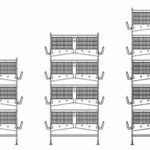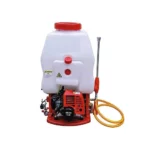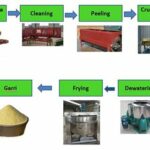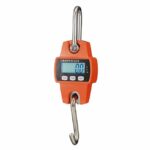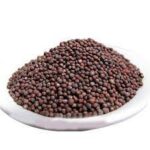Dying chicks can make any farmer want to quit poultry farming. It does not need to be this way, as that is where our expert-led free online training last month on How to Reduce Broiler Mortality was eye-opening for both seasoned farmers and those just starting out.
If you are looking to lower your chick mortality rates — ultimately saving money and farm more sustainably, read on as we share the tips from Dr Victor Agbajelola that will make your chicks survive and grow up to provide healthier and tastier meat for your customers.
Meet The Facilitator: Victor Agbajelola, DVM, MVSc
Victor Agbajelola obtained a Doctor of Veterinary Medicine Degree (DVM) with distinction in Veterinary Public health and Preventive Medicine (2014) and MVSc. (Veterinary Parasitology) from the University of Ibadan, Nigeria in 2017.
Between 2015 – and 2019, Dr Victor worked as a graduate research assistant, where he carried out sample collection for laboratory analysis for prompt diagnosis and treatment of disease occurrence/outbreaks on the farm.
He also has over five years’ experience in private practice on state-owned and private farms where he offers consultations in veterinary medicine, poultry farm operations, management practices, biosecurity measures as well as prevention/management of disease outbreaks.
As a private veterinary practitioner, Dr Victor oversees and trains farm staff in accordance with management (vaccination, feeding etc.) and research protocol.
At Afrimash, He worked as the category manager as well as the Quality control personnel for the livestock section
In his presentation, Dr Victor discussed basically best practices in sourcing for broilers and the brooding process.
Sourcing For Broiler Chicks
One of the most important decisions to make as a poultry farmer will be first to look for the best place to get your chicks. Unfortunately, in this part of the country, there are so many adulterations going on. You could barely look at any place where you wouldn’t find a product adulterated. Most of the complaints that come from farmers or most of the challenges a poultry farmer would face would be evolving around the prices at which he gets the birds.
In keeping the system that helps us to source for birds, you’ll need a reputable missile man as we know, most of these places are the hatchery.
An average livestock farm in Nigeria is more or less a medium or small scale farmer. So you would need the service of a middleman who will be honest, reputable, and upright enough to be able to supply you with good birds.

That is where Afrimash comes in. We have the technical skills, the knowledge, and the quality control to ascertain that whatever kind of birds you want are tested and trusted. We have a functioning quality control system that helps us to allow only quality chicks. Once that aspect of your system has been sorted out, you are more or less guaranteed a 60 – 70% success rate as a farmer. It is important that you as a farmer be able to identify the correct birds.
In the next point, I’m going to be giving some tips on how you would be able to identify if the birds you get are genuine, and not adulterated.
Essential Signs to Note in Day-Old Chicks
- Reflex: when you Lay a chick on its back. It should stand up within 3 seconds
- Eyes: Should be clean, open and shiny, not dull or closed
- Feet: Should be normal colour and not swollen and feel warmer than your cheek
- Beak: Should be clean with closed nostrils, without malformations
- Anus: Should be dry and shiny, not wet and tacky
- Uniformity: All chicks should be the same size, more than 20% too light or too heavy is a bad start
Look out for these signs in your birds, when you notice abnormalities, it’s a red flag… and it might impact the mortality rate in the future.
The Brooding System/Process
The next important step after the source of your birds then the signs you look out for is brooding.
Now, this is very important especially if you are picking up day-old chicks. It’s very important in the life cycle of the bird. This is because when you receive birds at day-old, they don’t; have sufficient feathers, they don’t have the thermoregulatory system developed with the structure to be able to survive on their own. So, you need a system called the brooding system.
The brooding system is when you give them an external source of heat, so as to allow survivability.

The most mistake that farmers do make is to think that the number of birds is directly proportional to the number of heating devices that you must have on the farm. For instance, if you get about 20 – 40 cartons of broilers, some farmers think that you need to increase the number of heating sources, (gas brooder, coal pot). You don’t necessarily need to increase it. The issue is this, when you have a large number of birds like that, they generate heat themselves. And the brooding system is defined not by how wealthy you are as a farmer. It is defined by the weather and the number of chicks you get.
So, in a situation you have more chicks, you don’t necessarily need to increase the heat source. What you just need to do is have an enclosure where you allow for heat generation to take place. For instance, we have a case where someone bought over 50 cartons and decided to buy a large coal pot because he feels the number of birds is much. You don’t necessarily need that. And before you know it, you’re going to roast your chicks instead of brooding them. So, each management practices in the brooding system are fundamental. Access to food is important, and access to water is important.
Another important aspect is where you’re getting birds, depending on your location. Birds when they are gotten like that you must give them glucose – anti-stress. The reason why you are doing this is not cos it’s tradition to do that but because they are dehydrated, they are already stressed from the journey.
Brooding Types
Depending upon the season, brooding practices vary in tropical countries where large conventional open housing is normally practised.
- Cold/wet season: Use 1/3 area of the house for brooding.
- Dry/warm season: Use 1/2 area of the house for brooding.
In view of fast growth and a high rate of metabolism, commercial broilers need special attention for the provision of enough ventilation.
Brooder Management
- Start and adjust the brooder stoves 24 hours before the arrival of chicks.
- Ensure that they are working properly.
- Adjust the temperature to 35°C at the edge of the brooder 2″ (5 cm) above the litter.
- Lower the temperature by 2.8°C each week until you remove the heat source
Questions
Question: In checking the reflex of the DOC, wouldn’t a stressful journey impact how long it will take to stand up if we placed it upside down?
Response: Very well observed sir. Some birds though have slower reflexes as a result of stress… That’s why you have to consider and combine all these signs together and not judge in isolation… Even if a bird has a delayed reflex, other signs should give red flags.
Question: Why is it some birds use to grow larger than others even with the same kind of feed and management
Response: Yes it’s nature…and unfortunately nature isn’t fair… Those that grow faster are called the shooters… It might be that the embryo is bigger during formation, or that the eggs were laid by old/matured breeder hens.

